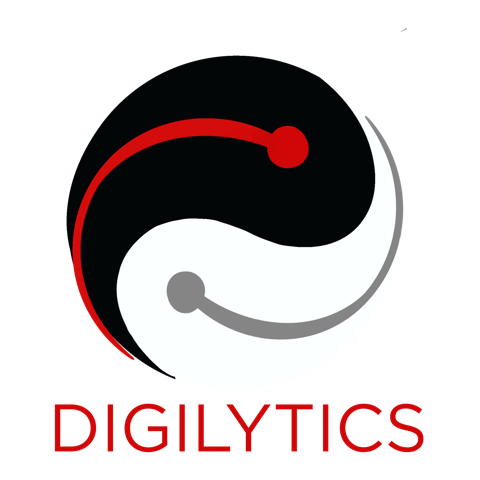Unleashing the Power of Data: From Raw Information to Valuable Insights – Carly Fiorina’s Perspective
Amidst the vast sea of data, a coherent strategy for prediction remains elusive!
It’s often said that data speaks to those willing to listen. And who better comprehends this language than our team of adept data specialists.
Termed as Predictive Models, these models serve as our allies in foretelling future outcomes through the lens of historical data. They harness the potency of data, statistical algorithms, and machine learning techniques.
The overarching goal is to transcend mere hindsight and offer the most accurate projection of what lies ahead.
However, these aspirations are far from effortless achievements.
Within this blog post, we delve into the paramount challenge of transforming data into insights. We unravel the top five genuine obstacles that confront us as we endeavor to construct predictive models. So, let’s embark on this enlightening journey.
1. Gauging Data Authenticity and Sufficiency
Frequently, experts grapple with the task of gauging the reliability of data and employing unsuitable historical data for future predictions. Thus, comprehending the genuine value of data becomes paramount.
The dilemma of an excessive or inadequate dataset is a recurring challenge for data scientists. The initial hurdle often involves determining how to effectively utilize, extract, cleanse, or interpret data to glean meaningful insights and construct models.
Dive deep into your data, consistently favoring meticulously curated and sanitized datasets. Plumb the depths of your data, cultivating a thorough understanding to preempt any potential pitfalls during subsequent modeling phases.
The Mortgage Conundrum
A significant portion of financial and mortgage industry data exists in an unstructured format—scanned documents, PDFs, images, and the like. Unlocking the latent potential of these datasets necessitates the deployment of advanced AI (Artificial Intelligence) solutions. These solutions serve to transmute the data into organized and accessible formats, enabling substantive analysis and the development of pioneering machine learning applications.
2. Fusing Business Acumen with Data Interpretation
A comprehensive grasp of the industry or business is pivotal in deciphering and forecasting insights. Frequently, a lack of synergy between business management and data experts results in skewed objectives.
The Mortgage Dilemma
The initial stride involves delineating the crux of the issue, succeeded by pinpointing essential data and devising a collection methodology. To illustrate, when gauging the holistic mortgage risk for underwriting, an enhanced customer profile becomes imperative. Augmenting credit bureau data with social footprints enables a more profound comprehension of customer behavior, thereby significantly influencing overarching decisions concerning risk assessment and fraud mitigation.
3. Navigating Data Prejudice
The well-known anecdote involving Amazon’s predictive model, engineered to forecast employee success, casts a revealing light on data bias. The model, rooted in the company’s historical employee data which skewed male, ended up favoring males – a tangible manifestation of data bias.
This analogous issue frequently insinuates itself when crafting predictive models. Countless strategies exist to counteract data bias in these models – infusing a human perspective, cultivating team diversity, achieving equilibrium during model development, and rigorously testing with sample data before full-scale implementation.
The Mortgage Conundrum
Consider the mortgage underwriting sphere: even a hint of favoritism or discrimination toward specific individuals or communities can spell catastrophe for a mortgage provider, potentially inviting regulatory scrutiny. The intricacies of mitigating data bias during the AI application-building process demand vigilant and deliberate handling.
4. Striking the Balance: Model Overfitting or Underfitting
This scenario arises when a given model excels during training data evaluation, only to exhibit a pronounced decline in performance when subjected to a test dataset – a phenomenon known as model overfitting.
Conversely, if a model displays subpar performance across both the training and test datasets, it’s characterized as an underfitting model.
The pinnacle lies in a model that expertly avoids both underfitting and overfitting, achieving the delicate equilibrium of optimal performance.
The Mortgage Predicament
For mortgage providers, it becomes paramount to ensure the deployed models attain this coveted balance. Take, for instance, an overfitted mortgage risk estimator; its inability to generalize effectively in real-world scenarios can trigger erroneous decisions with tangible impacts on the bottom line. Conversely, an underfitted estimator might falter in accurately gauging risk, leading to its own set of ramifications.
5. Assessing Model Performance
Misalignment between employed data and constructed model calls for rigorous Model Evaluation. It constitutes an integral facet of the model development journey, facilitating the discovery of the most fitting model to encapsulate our data and gauge its potential efficacy in forthcoming scenarios.
The Mortgage Conundrum
Model Evaluation stands as an ongoing endeavor, a perpetual refining process. This principle extends to AI solutions tailored for mortgages, necessitating recurrent assessments and recalibrations. Consider AI-driven solutions designed to assist underwriters during initial stages – these solutions evolve through a symbiotic relationship with human interventions, refining their prowess until a noteworthy performance threshold is reached. Vigilantly monitoring this learning trajectory at regular intervals emerges as an indispensable endeavor.
To culminate, predictive analytics surmounts a multitude of hurdles. Yet, the transformative business benefits that lie in wait are nothing short of monumental.



